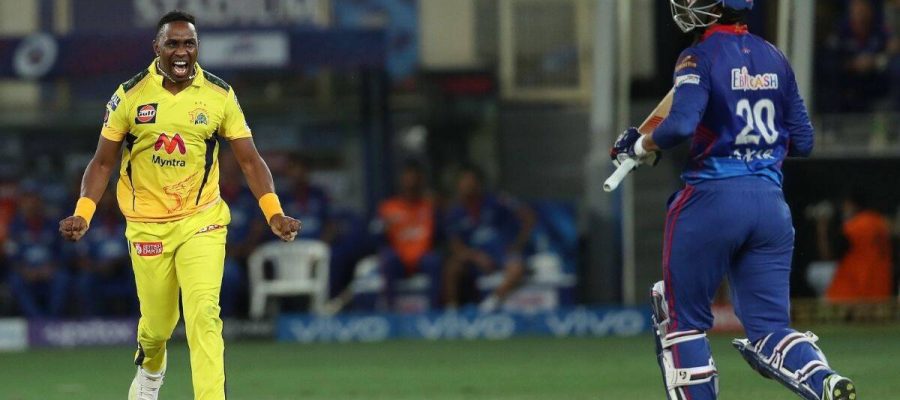Bravo can not only serve out the full dipping slower ones but also possesses the ability to deliver the cutters that grip the surface.
Why was Dwayne Bravo given just two overs, the 18th and the 20th? That decision from MS Dhoni might well have proved the difference between a win and a loss. It was a two-paced tacky pitch ideally suited for Bravo’s slower ones that grip the surface. Dhoni wasn’t asked the question at the post-match but in a general observation on the pitch, he said he thought taller bowlers who hit the deck posed more problems. That would fit a bowler like Delhi’s Kagiso Rabada who has the ability to pound the track with his slow cutters, and not someone like Josh Hazlewood or even Deepak Chahar who bowled seven overs between them. Bravo can not only serve out the full dipping slower ones but also possesses the ability to deliver the cutters that grip the surface.
Be as that may be, Bravo nearly won the game in his two overs, the 18th and 20th of the chase, when he was brought out of the cold storage. He could have sealed it in his first itself had K Gowtham held on a to a regulation catch at long-on that would have taken out the danger man Shimron Hetmeyer. Instead, it ran away to the boundary to leave Delhi Capitals needing 18 from 14.
But Bravo wasn’t done yet. He nearly pulled it off in the final over when he had to defend just 6 runs. It came down to three from four after a dot ball, when he induced Axar Patel to squirt one of his typical well-outside-off slower one straight to covers. This time, though, Bravo slipped a full ball on the pads and Kagiso Rabada helped it away to the fine-leg boundary.
Hetmeyer roars
The man who celebrated the most was Hetmeyer, hopping, pumping his fist, and roaring away. And why not, it was a lovely gem from him under pressure. When Hetmeyer walked out at N0.7, below R Ashwin, Delhi Capitals required 39 from 35. Ashwin’s promotion was quite understandable as Shikhar Dhawan was still there, and Ashwin had showed in the previous game that in a run-a-ball situation on a slow pitch, he could do the job adequately. As it transpired, not only Ashwin but Dhawan too combusted, slamming a wide half-volley to cover fielder.
Hetmeyer worked the singles until the 18th over when he thumped Bravo to the straight boundary. He nearly holed out next ball but not only did Gowtham reprieve him, he also got a four. When 15 runs were needed off 9, he walloped Josh Hazlewood over the backward square-leg boundary to bring back parity. There was some controversy in the final over when the umpires called a full toss wide outside off that didn’t land on the pitch as a wide. Ricky Ponting, Delhi’s coach, was livid as he rightly felt it should have been a no-ball with a free hit on offer. But Delhi held their nerves to finish the game.
Dhawan does what Dhawan does
There aren’t many batsmen more suitable than Shikhar Dhawan in a sub 150 kind of a chase. Especially on slow tracks. Especially these days when he is in red-hot form and can attack from the start when he decides.
It was a fine knock from Dhawan on how to go about chase in these conditions. He took calculated risks with the new ball, against Deepak Chahar. Scratch that risk; it wasn’t. He went down the track to hoist Chahar couple of times beyond the boundary but he is one of the best exponents of that to the seamers in the recent years. With most others, when they do that, you can sense the adrenalin rush and feel the risk. Dhawan advances steadily — doesn’t charge, doesn’t skip, doesn’t rush. He maintains his shape admirably – doesn’t open up, stays side-on, shoulder pressing forward and executes his shot well. And can pull out of any intended big hit if the ball isn’t quite there, as he would to Shardul Thakur in the 15th over. In the end, he fell hitting a wide half volley from Thakur to cover to usher in some drama in the chase but his contribution was vital. Just as Ambati Rayudu’s fine 55 was in giving Chennai something to bowl.
Source: Read Full Article


